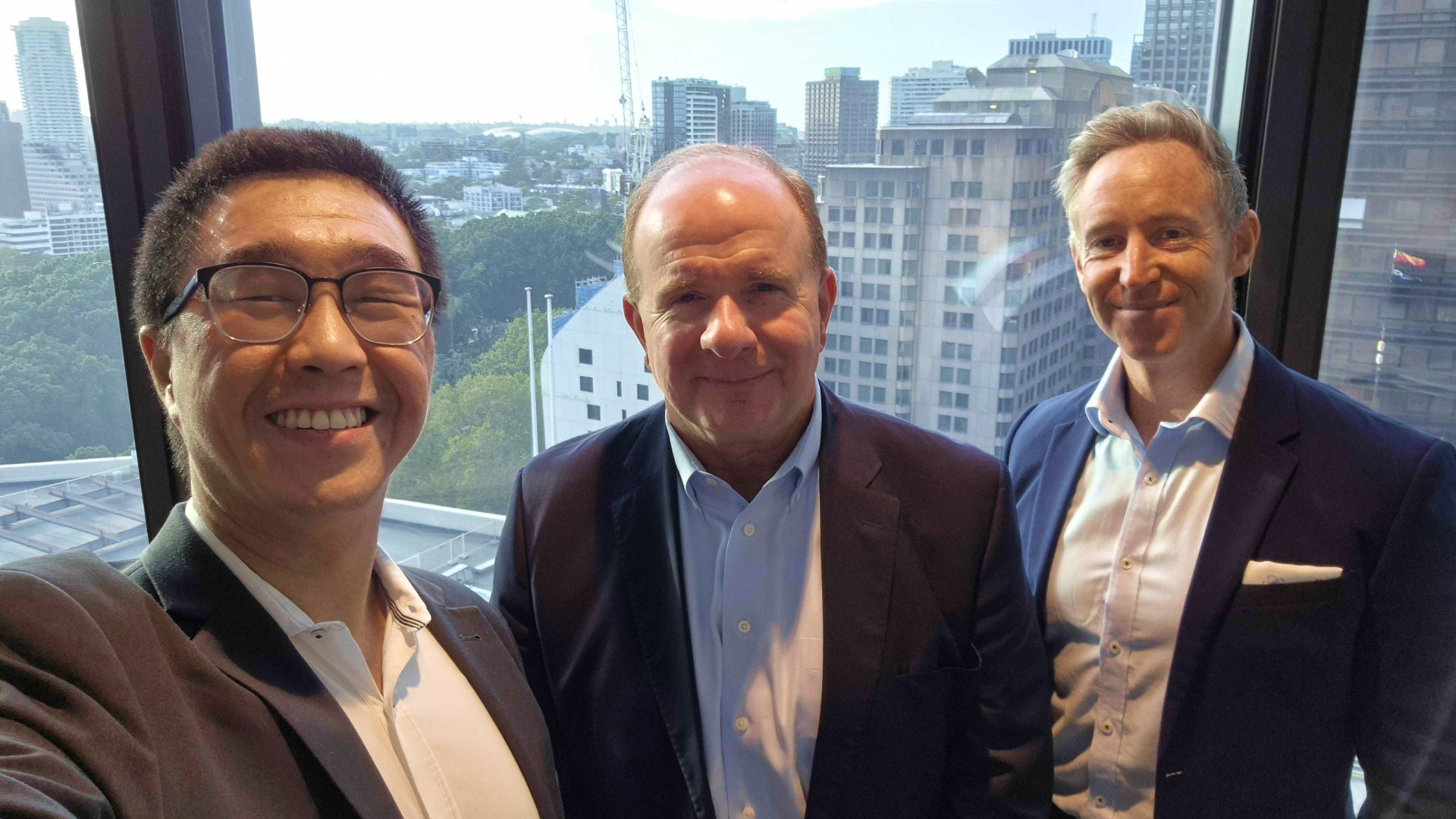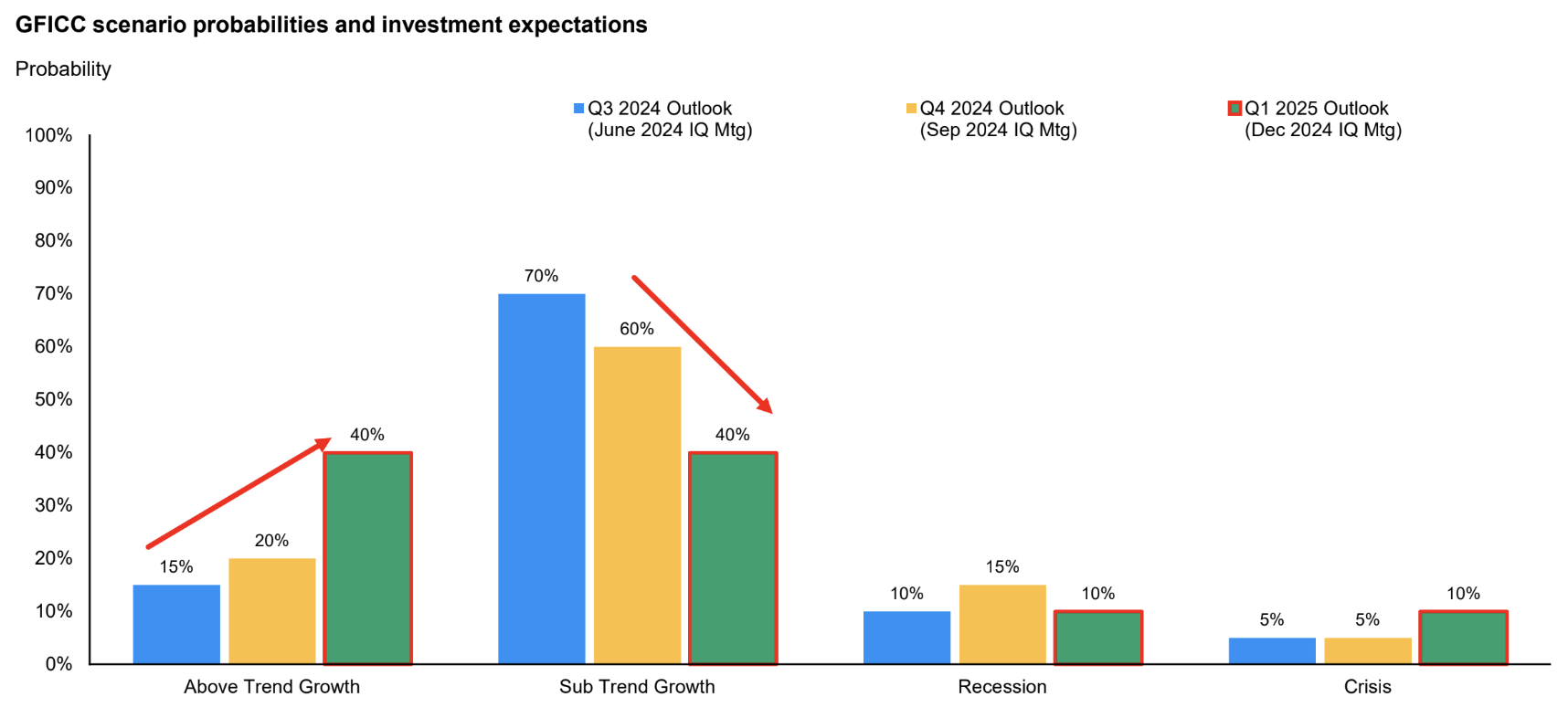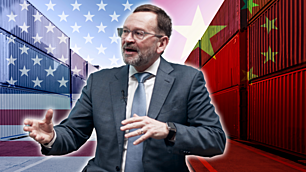The $8 trillion question keeping J.P. Morgan's Bob Michele up at night
In a market and policy environment where everything changes on a tweet, excessive volatility is the name of the game that will keep more than a few investors up at night. But just because tariff threats and a second global trade war are the topic de jour right now does not mean that there aren't other issues to keep abreast of. Among them, the fact that asset valuations are still stretched as well as the unanswered question as to how many interest rate cuts central banks can afford to make.
And there is, in fact, one other big question hanging over the minds of professional investors like Bob Michele, J.P. Morgan Asset Management's Chief Investment Officer and Head of the Global Fixed Income, Currency & Commodities, and Kerry Craig, J.P. Morgan Asset Management's Australia-based Global Market Strategist.
To find out what it is, as well as how the two men are approaching the impact of tariffs on asset class positioning, read the rest of this wire.

The valuation backdrop heading into 2025
Despite the rise in long-end bond yields and the erratic moves in AI-centric stocks caused by the DeepSeek saga, Craig observes that "nothing is screaming cheap" in the global equity markets.
"Most have valuations that are above fair value and have gone up over the course of the last month particularly in the US," Craig says.
But just because it's not cheap doesn't mean it's immediately ignored. He says this time has been used by the J.P. Morgan team as a time to tinker with portfolios (though it is keeping its bias toward risk assets.)
"Within equities, we are looking to rebalance and think about how we can allocate towards other parts of the market structure within the US like small caps," Craig adds.
The economic growth forecast is changing - in a big way

At the outset of this interest rate cutting cycle in August 2024, some investors were expecting as many as seven rate cuts from the Fed.
But with every firm data point, those hopes were dashed and a new reality of tepid but not recessionary economic conditions took hold. Those changes in forecast are reflected in the above chart.
While the Fed is still likely to cut - or at least get another window to cut interest rates - there may be as little as only one or two more rate cuts from the world's most important central bank.
"They've talked about a neutral rate of closer to 3% but they just left rates where they were and hopefully that continues to dampen inflation. Then, you can come in and cut rates perhaps once or twice later this year," Michele says.
The effect of Donald Trump's tariffs on portfolio construction
Given it's early days for this administration, you'd be "grasping at straws in the wind" trying to figure out the impact of these tariff announcements. But, being a fixed income investor, Michele turned to the signals in the bond market.
"The yield curve got it right. There will be a reset higher in prices," he argues. "It can absorb some of the tariff's implications in terms of higher inflation temporarily and a slowdown in growth. But if it escalates and there are more tariffs across more countries, then that's a bigger concern for the US economy."
But are tariffs actually stagflationary?
Michele says that every model he has seen points to one conclusion.
"Every single model indicates that there's a step up in inflation and a step down in growth. It just depends how many and how long, those steps get bigger. It is stagflationary," Michele hypothesises.
Some of this is already feeding through to the smart money as well. 10-Year breakeven TIPS rates eclipsed 2.4% last weekend. TIPS are a fixed income tool generally used by investors when they think inflation is going to rise.
"The stagflation view is being priced into a lot of the bond market," he adds.
We've discussed the stagflationary effect on the economy caused by tariffs a little further in this feature interview with Lazard's Ron Temple. If you'd like to catch that interview, you can click here:

Where Bob Michele is putting money to work
Michele is primarily interested in three different areas of the global fixed income market:
- European duration, buying government bonds with 5-10 year maturities on bets the European Central Bank will cut interest rates further than their peers and perhaps even further than markets expect. (You'll sometimes see this called "intermediate duration")
- US: Investment grade, high yield credit and bank loans - Michele says he remains "very comfortable" and would be keen to buy more if spreads were to widen. He also says that he would only sell credit investments if "you're heading into a recession". A US recession, even with tariffs that last until the end of 2025, is unlikely in Michele's view.
- Chinese government bonds (through invoice swaps)
The one thing that keeps Bob up at night

Of course, while tariffs are the hottest topic of this moment, it doesn't mean that other issues simply die down. So I asked Michele what is keeping him up at night. This is what he said - in full (bar any edits for clarity and brevity):
"I do feel that there is a lot of money sloshing around the system. When we go back and we look at the bills that have come since the pandemic, you start with the CARES Act, then you wind up with the Inflation Reduction Act, the CHIPS and sciences Act, the infrastructure act, there's a lot of them.
That's about US$8 trillion. A lot of that money has been spent. But a lot of it is still available and being accessed.
If you look at the amount of money in private capital, it's a lot and a lot of it is just committed. It hasn't been called yet and it feels as though we were getting to a point where businesses and households have absorbed the higher rate regime. Coming into this past week, we were talking about 2.5% GDP, 4.1% unemployment, and businesses thinking about investing again. When we look at the Chase credit card data, spending has started to turn up again and deposit balances have started to go up, so the consumer looked in a healthier position.
But now, it just feels like households are now only starting to absorb that. And if new and existing home sales picked up, you start the process again and then, maybe the neutral rate is close to 4% and until the Fed starts to take more liquidity out of the system or it drains from the system, they might have to come back and hike rates again."

